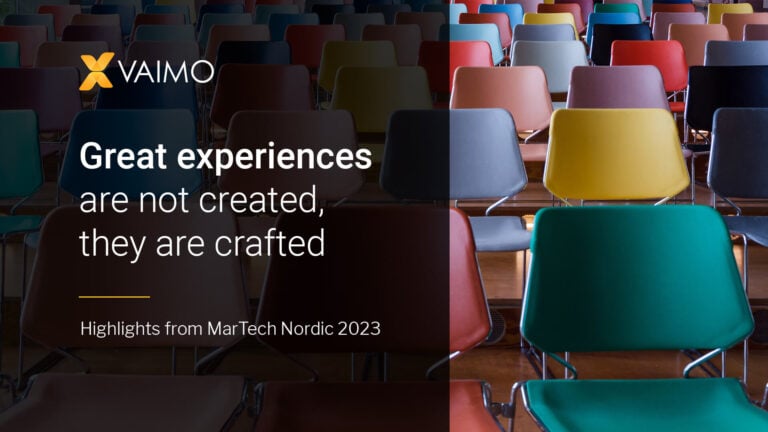The yearly Smart Commerce event brought retail and ecommerce players together once again. At the event, there were discussions about common challenges, possibilities, and opportunities that can be explored to accelerate digital change. In addition, interesting talking points on how to move from traditional ecommerce models to customer-centric, data-centric, brand-centric, and experience-driven models surfaced. In this article, we will dive into the presentation by Steven Volders, who discussed future-proof digital commerce and how to prepare for personalization at scale.
Table of contents
- Future-proof digital commerce – how to prepare for personalization at scale
- Key takeaways to succeed with optimization & personalization at scale
- How Vaimo can help
Future-proof digital commerce – how to prepare for personalization at scale
In his speech at the Smart Commerce event, Steven Volders, Vaimo’s Global GTM Director – Customer Data, Insights & Activation, elaborated on what you should be focusing on when you embark on a journey for future-proofing your digital commerce by investing in personalization capabilities.
Why is it important to do personalization right?
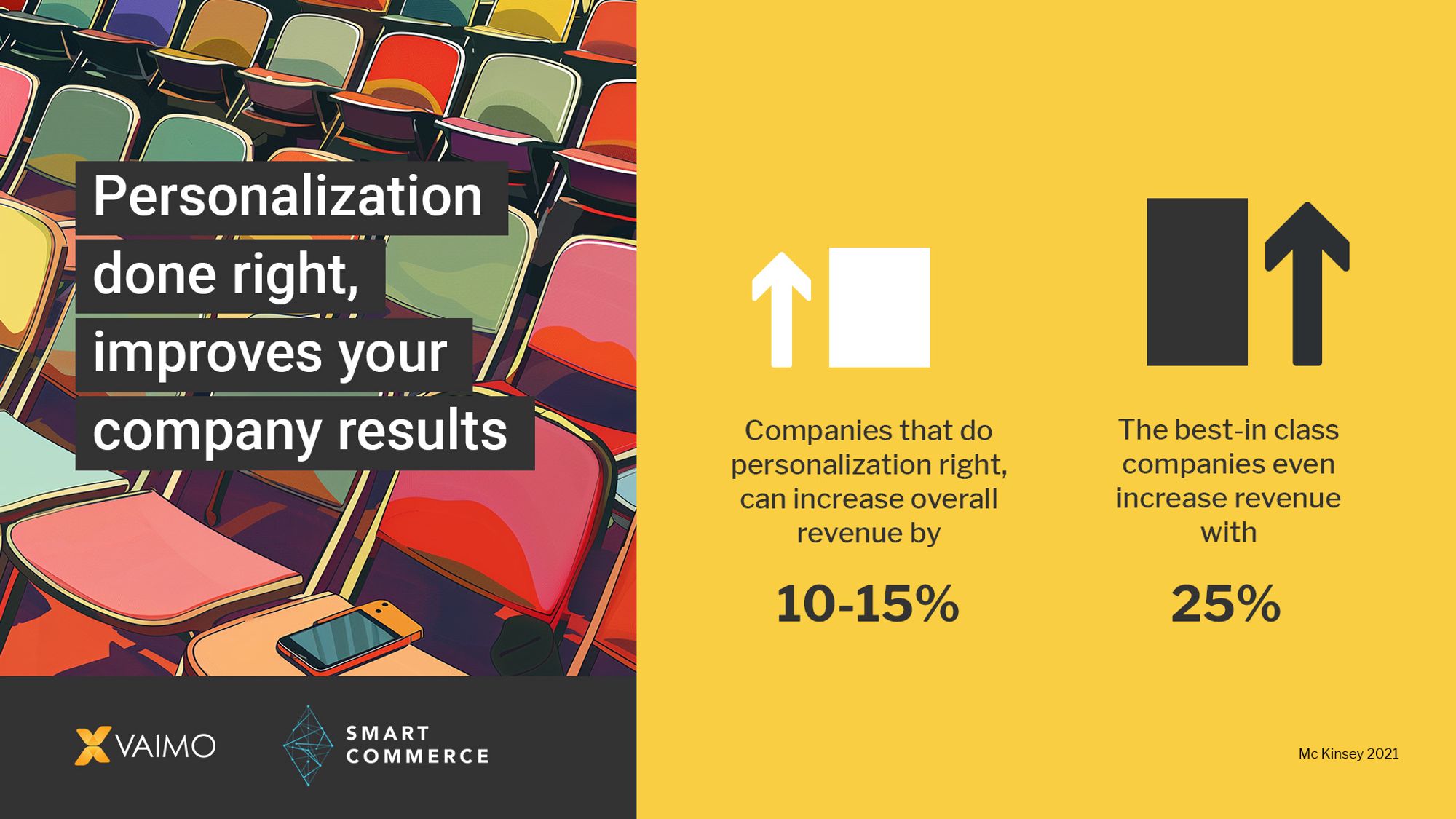 Research shows that companies that do personalization right can increase revenue by 10-15%. The best in class even manage to increase revenue by 25% thanks to personalization.1 Personalization has a positive impact on conversion rates, AOV (average order value), customer retention, etc. In other words, customers are also more likely to re-purchase from brands that offer personalized experiences.
Research shows that companies that do personalization right can increase revenue by 10-15%. The best in class even manage to increase revenue by 25% thanks to personalization.1 Personalization has a positive impact on conversion rates, AOV (average order value), customer retention, etc. In other words, customers are also more likely to re-purchase from brands that offer personalized experiences.
Define your success
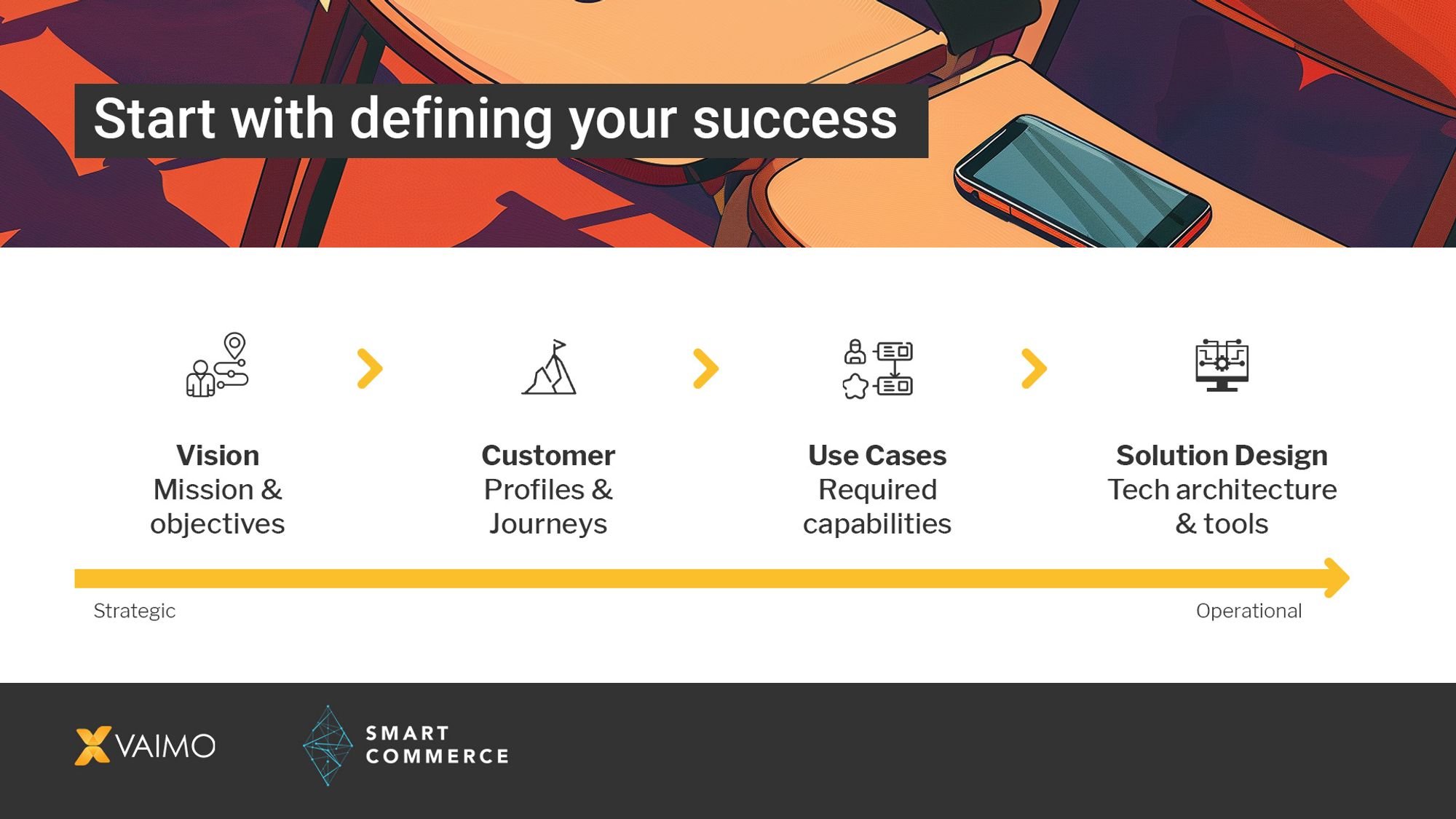 In defining your success, it’s important to start by focusing on the customer experience first before moving on to technology: that is, moving from the strategic side to the operational side. The first step should be clarifying your mission and vision as well as setting objectives for your journey.
In defining your success, it’s important to start by focusing on the customer experience first before moving on to technology: that is, moving from the strategic side to the operational side. The first step should be clarifying your mission and vision as well as setting objectives for your journey.
The next step is identifying your customers and target audience. This includes customer profiles, customer journey, and the “pains and gains” customers might face along the way. Once your customers’ main journeys and struggles have been identified, you can define use cases supporting your business objectives. Knowing which use cases you want to implement allows you to identify the required capabilities for the solution, processes, and people supporting these. All this leads to solution design, where you can define the architecture and tools you’ll need.
Single view of customer and product
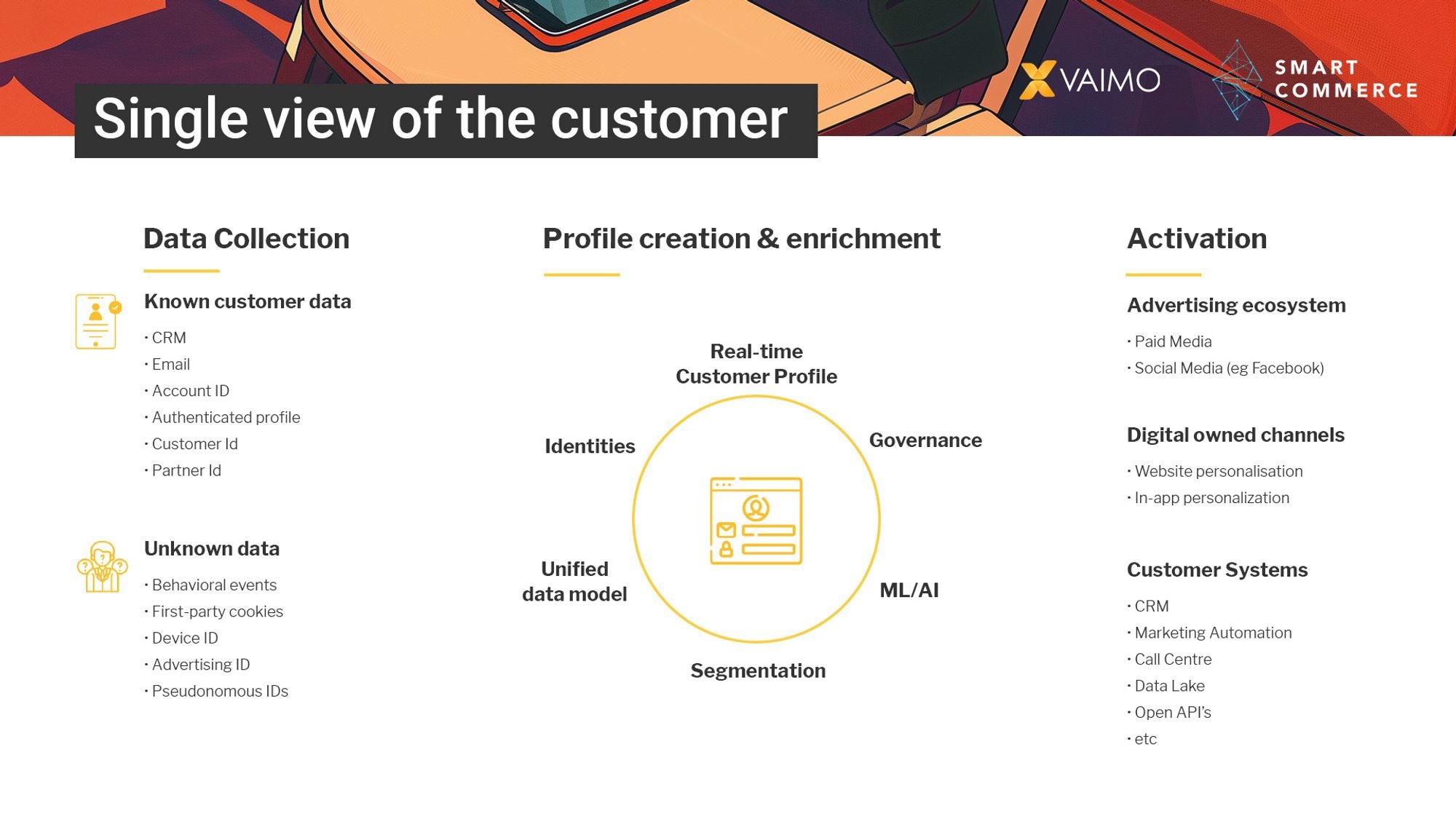 The average customer has multiple connected devices and companies have numerous different sources for leveraging customer data. If you want to provide a fluent customer experience across touchpoints, it’s a challenge to get a clear view on the customer’s needs, interests, and desires in an efficient and effective way, while being compliant with legal constraints.
The average customer has multiple connected devices and companies have numerous different sources for leveraging customer data. If you want to provide a fluent customer experience across touchpoints, it’s a challenge to get a clear view on the customer’s needs, interests, and desires in an efficient and effective way, while being compliant with legal constraints.
That’s why you need a single view of the customer, which means collecting and stitching known and unknown customer data to form a single profile of a customer. The use of data has to be governed to avoid misuse. Segmentation is key to be able to use the data in proper cases, such as advertisement or personalization on websites. In short, the single view of the customer comprises Data Collection, Profile Creation & Enrichment, and Activation.
Do you want to know how to master your customer experience facilitated by centralized customer data? Explore how a CDP (customer data platform) can help you to better understand and leverage your customer data for omnichannel personalization.
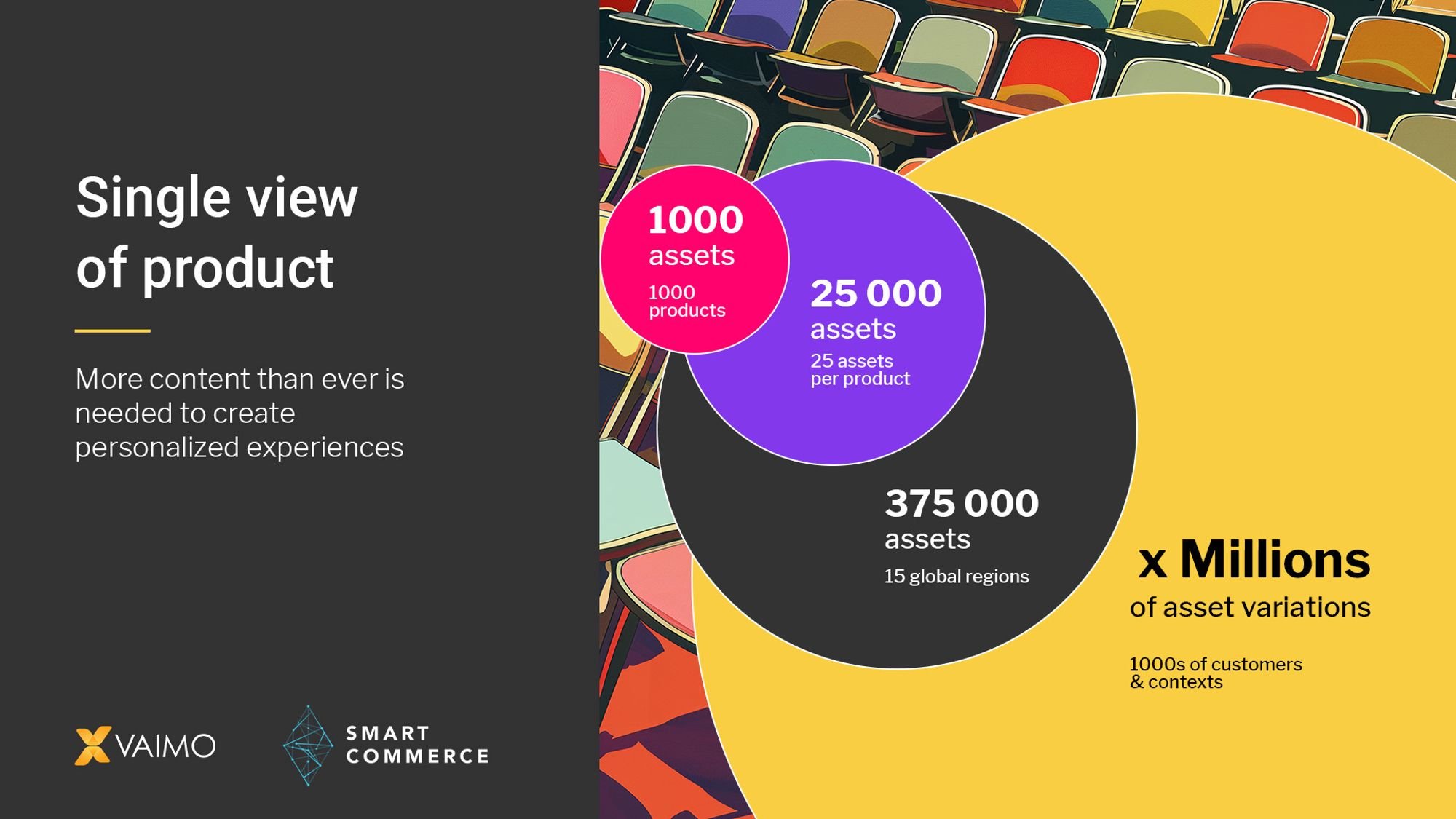 To facilitate personalization at scale, we require more and more content. Depending on the number of products, assets per product, regions, and customers, you easily end up with millions of asset variations. That’s why it’s important to have a “single view of the product” as well.
To facilitate personalization at scale, we require more and more content. Depending on the number of products, assets per product, regions, and customers, you easily end up with millions of asset variations. That’s why it’s important to have a “single view of the product” as well.
Key takeaways to succeed with optimization & personalization at scale
1. Define your purpose: Dream big, start small
You are allowed to dream big and start small, as long as you keep your eyes on the long-term vision. Don’t rely too much on short-term fixes or focus on current limitations, because they may stop you from going the distance and they may not help you reach your vision.
2. Start from the customer and work backwards to the technology
Initiate the definition of your success by starting from the customer experience, and then move on to considerations regarding technology.
3. Focus investments in your ‘Goldilocks’ zone
You need to find the best areas to invest in. Try to avoid over- and underinvesting and find the optimal zone of investment that provides value to your business.
4. Single view of the customer & product
Make sure you have a single view of the customer and products, so that you are able to collect the right data to form customer profiles and leverage them for personalization.
5. Great experiences are crafted by people, through iterative processes
As Steven said, ”In order to succeed, your desire for success should be greater than your fear of failure ” – your team should have an environment where experiments are encouraged and continuous learning is at the core.
A Customer Data Platform (CDP) offers a unified customer view and allows you to focus on organization-wide user experiences. Learn more about CDPs and download our free ebook »
How Vaimo can help
With our team of senior industry experts, we can guide you and your organisation to help you clarify the vision and ambitions and translate that into an actionable plan & roadmap to gradually mature on all key capabilities following our proven framework:
- Purpose (Vision & objectives)
- Privacy (Consents, Security)
- Processes (eg to understand & optimise the customer journey)
- People (roles, training, culture) &
- Platform (tools, data)
We have the experts in place to strategise, define, implement, operate and educate to assist your organisation in such a transformation.
Do you need specific guidance to further navigate in the martech space? Look at our self-assessment tools for CDP, Headless CMS and PIM, to find out where you stand in those domains and if you would benefit from those solutions. Or contact us to get started right away!






